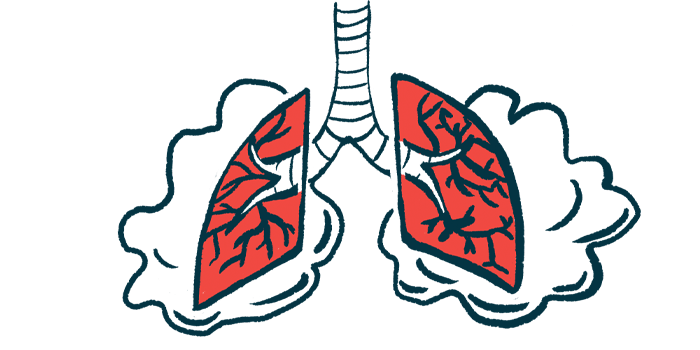Bacteria Changes, Inflammation Evident in Lower Airways at Age 2

Young children with cystic fibrosis (CF), relative to age-matched peers with disorders also affecting the lungs, show differences in bacterial communities and inflammation of the lower airways starting at around age 2, a study reported.
A lesser variety of bacterial classes and more inflammation in the lower airways — including the trachea, bronchi, bronchioles, and the alveoli (lungs’ tiny air sacs) — were evident in young CF patients, the researchers reported. These findings may help in better understanding how CF lung disease develops and in treating it at earlier stages, they added.
“If we can prevent worse infections, we could improve the quality of life and potentially expand the life expectancy of patients with CF,” Theresa Laguna, MD, the study’s senior author with Ann & Robert H. Lurie Children’s Hospital of Chicago, said in a press release.
The study, “Divergence of bacterial communities in the lower airways of CF patients in early childhood” was published in the journal PLoS One.
Previous work has identified agents like Pseudomonas aeruginosa as drivers of airway damage and lung function decline in CF. But the role of the microbial community in CF lung disease is not well established, particularly in childhood. Earlier research that also indicated a greater microbial diversity in younger patients (that declines with lung disease) was based on findings from the upper airways, and “upper airway samples … may not adequately reflect the lower airway microbiota,” the study noted.
Researchers in the U.S. analyzed lower airway samples collected via flexible bronchoscopy with lavage, a common if invasive procedure to sample the lung’s airways.
Their study recruited 63 patients with CF and 128 others with diseases affecting the lungs (such as pneumonia or cancer), from infancy to age 21, at clinical centers connected with the universities of Minnesota and Colorado. The other patients served as a control group, as bronchoscopy is not given without reason.
Results showed that the total bacterial load was greater in CF children than in the controls, particularly at ages 5–8 and in adolescence. This suggests that “environmental exposures or developmental changes exhibited during school age could drive microbial changes in the CF airway,” the scientists wrote.
“Given CF is a disease characterized by chronic airway infection, a high bacterial burden is expected; however, such a clear divergence from samples collected from DCs [disease controls], several of which were immunosuppressed and chronically infected, is noteworthy,” they added.
Analyses using sensitive genetic sequencing also found lesser bacterial variety in CF patients compared with control patients. Diversity in lung bacteria of the lower airways was similar between the groups until age 2, and then declined in CF patients while continuing to diversify in controls.
“This difference in diversity was most noticeable between 2–5 years of age, identifying a time when airway infection, inflammation and mucus obstruction may be taking hold within the CF airway,” the researchers wrote. They suggested this age range could be a window of opportunity for intervention, although more research is needed.
Bacterial classes differed across the age spectrum. For instance, while the Streptococcus mitis group was present across various ages in controls, its abundance was low in younger CF patients. Typical CF microbes — including Staphylococcus aureus, Stenotrophomonas, and P. aeruginosa — were more abundant in patients with this disease.
Notably, CF lower airway samples showed shifts in dominant bacteria, from Haemophilus in infants, to Staphylococcus aureus and Stenotrophomonas taking dominance in patients ages 2 to 10, “followed by Pseudomonas aeruginosa in older subjects,” the researchers wrote.
Airway inflammation, as measured by total white blood cell counts and the percent of neutrophils (specific immune cells), was also greater in CF patients after age 2 than in controls.
These CF patients showed increased inflammation even when their bacterial load was lower, whereas with controls, airway inflammation appeared to increase with higher bacterial load.
These findings are consistent with previous research indicating heightened inflammation in the airways of people with CF, including those with stable disease and no infections, the researchers noted. As such, inflammation in CF does not appear to be dependent on bacteria triggering an inflammatory response.
A limited number of samples were available among patients taking antibiotics in either group, with no significant differences evident in bacterial diversity or in lung function between antibiotic users and non-users. The investigators noted that CF patients may have been started on antibiotics after the bronchoscopy.
These findings support a clear divergence in bacterial communities in CF patients starting in early childhood, at ages typically before progressive lung disease takes hold. This suggests that earlier use of treatments targeting specific bacteria might prevent more severe lung disease.
“Establishing key age-related differences in lower airway bacterial communities and inflammation in patients with CF, especially during early childhood, may give us a window of opportunity for earlier and more precise treatment,” Laguna said.
Researchers urged that more studies be conducted into “the airway microbiome and how it incites inflammation early in life” to better understand CF lung disease development and potential steps “to mitigate disease progression.”








